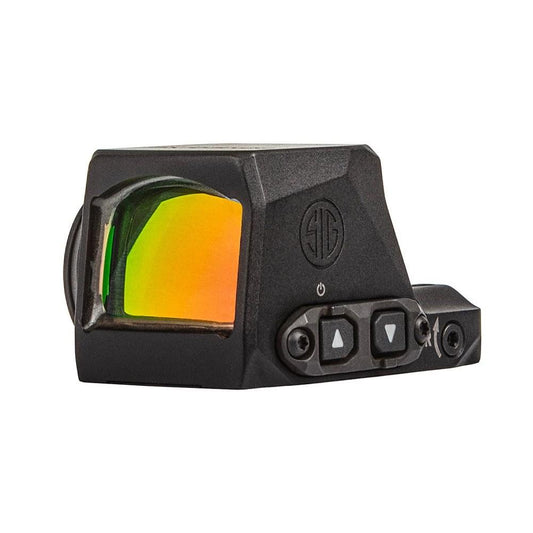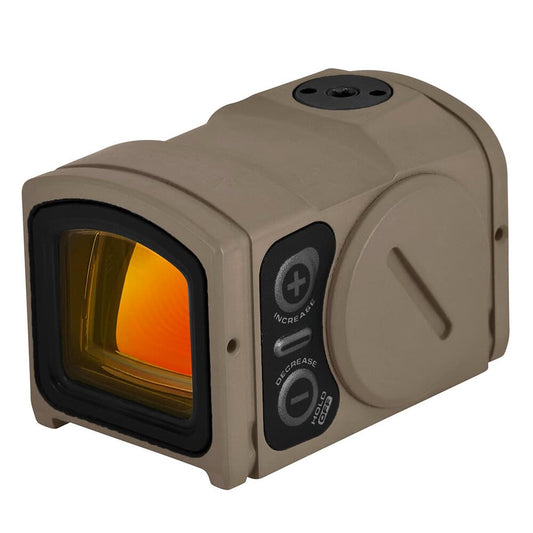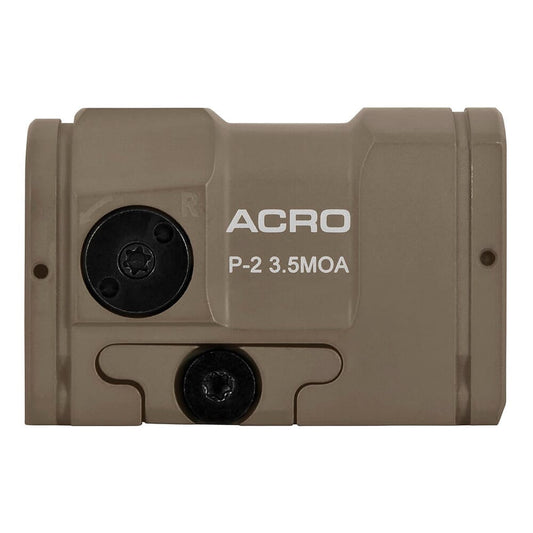

Sig Sauer Romeo-X Pistol Mounted Red Dot Reflex Sight Pro offers reliable performance and durability for P320 and Deltapoint Pro models. Made from rugged CNC 7075 aluminum, it withstands various environments, ensuring longevity. The ultra-low deck height facilitates co-witnessing with standard iron sights, which enhances versatility in precision shooting scenarios. Intuitive adjustment buttons and a side-mounted battery compartment ensure you're always prepared for action, whether at the range or in the field.
Designed, tested, and assembled in the USA, this reflex sight meets military standards. Quick target acquisition and exceptional clarity make it suitable for long-range applications. With its compact design, the Romeo-X adds minimal weight to your firearm while enhancing your shooting experience.
Key Features:
- DURABLE CONSTRUCTION for extreme conditions, ensuring longevity and reliability during your shooting sessions.
- ULTRA-LOW DECK HEIGHT allows for quick co-witnessing with standard iron sights, enhancing your versatility.
- INTUITIVE ADJUSTMENTS with easy-access buttons, allowing for fast modifications to your sight settings.
- SIDE-MOUNTED BATTERY COMPARTMENT for hassle-free battery replacements without disturbing your sighting.
- OPTICS-READY DESIGN directly mounts onto your favorite pistols, saving you time and effort in setup.
- AMERICAN-MADE QUALITY with rigorous testing to ensure it meets the demanding needs of military applications.
- RAPID TARGET ACQUISITION facilitates quick aiming, crucial for high-pressure situations.
- LIGHTWEIGHT AND COMPACT for easy handling without adding bulk to your firearm.
Technical Specifications Table
| Specification | Details |
|---|---|
| Magnification | 1x |
| Lens Diameter | 30mm |
| Weight | 4.5 oz |
| Dimensions | 3.2" x 1.5" x 2.4" |
| Material | CNC 7075 Aluminum |
| Battery Life | Up to 20,000 hours |
What’s in the Box?
- Sig Sauer Romeo-X Reflex Sight
- Lens covers
- Mounting screws
- User manual
Customer Reviews
"The best red dot I've ever used! Quick setup and incredible accuracy." - John D.
"I love how lightweight it is, makes my P320 feel like a dream." - Sarah K.
FAQ
How does the Romeo-X compare to other red dot sights? The Romeo-X offers military-grade durability and precision, making it stand out among competitors. Its low deck height and quick adjustability are designed for optimal performance and ease of use, ensuring you can adapt to any shooting scenario.
What maintenance is required for the Romeo-X? Regularly check the mounting screws for tightness, clean the lenses with a soft cloth, and replace the battery as needed. Its design allows for straightforward upkeep, ensuring you can focus on your shooting.
Similar Models
Looking for the perfect optics to pair with your Sig Sauer? Discover our extensive line of Sig Sauer sights including the Sig Sauer Romeo5 for a lightweight option and the Sig Sauer Romeo4T for advanced features. Explore our full collection for exceptional optics tailored to your shooting adventures.
You May Also Like
Here’s some of our most similar products people are buying. Click to discover trending style.








